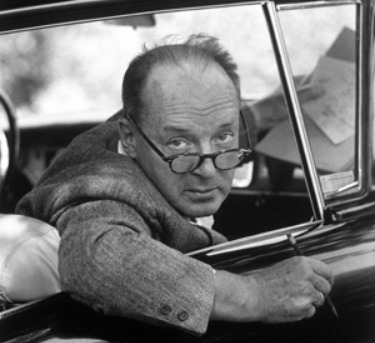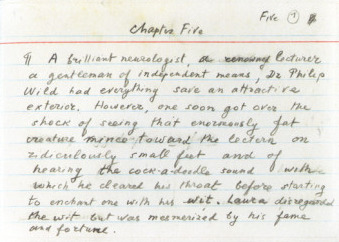
Vladimir Nabokov famously instructed his wife Vera to destroy his final, unfinished novel, The Original of Laura, if he didn’t live to complete it. At his death, the draft consisted of a stack of notecards which he’d shuffled through, added to, and rewritten right up until the end.
Vera, having once saved an early version of Lolita from the incinerator, found herself unable to carry out his wishes. The task fell to their son, Dmitri, who waffled for years — publicly and dramatically but also somewhat understandably so, for not only had Nabokov reaped the benefits of the Lolita rescue, he’d approved of the decision to save Kafka’s drafts against the author’s express commands. While Nabokov may have claimed to believe that every artist should “ruthlessly destroy his manuscripts after publication,” many of his own papers survived him.
All the post-death uncertainty over the fate of the book culminated, finally, in publication last fall. The Original of Laura is a facsimile series of the original index cards, with transcriptions below them, which can be detached along their perforated edges and held in the hand just like Nabokov’s.
The story being unfinished, character development is slight. The most remarkable aspects of the nubile love interest, a young woman with the “frail, docile frame” of a child, are the men who desire her: her mother’s lecherous charmeur, whose name, “no doubt assumed,” is Hubert H. Hubert (Lolita’s Humbert in a new incarnation?); her own novelist lover, who “destroys his mistress in the act of portraying her”; and her husband, Peter Wild, a stingy, obese, and lovelorn neurologist with tiny feet. Despite all that’s missing in The Original of Laura, though, an intensity characteristic of Nabokov’s work (and missing in most of the self-consciously experimental fiction that purports to borrow from his) pervades it.
Wild strives to inflict upon himself the “sweetest death,” to will himself out of being, body part by body part, starting with his toes and working upward, in an act of “self-deletion.” For all their abstraction, these passages are fresh and surprising and sometimes moving. And as many have observed, the final card in the series presents a list of synonyms for annihilation — “efface, expunge, delete, rub out, wipe out, obliterate” — that, inevitably, casts us back to a consideration of its author’s fate.
The Original of Laura is not really a novel. It is a fascinating artifact, an almost-story that thwarts immersion by continually calling attention to its architect. As I made my way through the notes, I kept imagining the author of Pale Fire and Look at the Harlequins!, at his most mischievous and perverse, plotting not just this last book, but the whole publish-or-destroy drama it engendered, from his deathbed.

Other commentary: Aleksandar Hemon, Why The Original of Laura should never have become a book.; Stoppard, Burn It; Banville, Nabokov’s Laura is “little more than a blurred outline, a preliminary shiver of a novel. And yet“; David Lodge, Shored against his ruins; Jeanette Winterson, “a sane decision.”